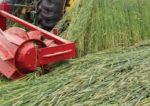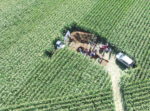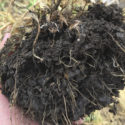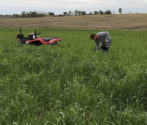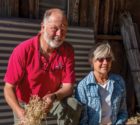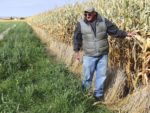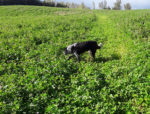Advertise Follow Us
Cover Crops
4 Ways to Optimize Cover Crop Benefits
Adding cover crops to your rotation can help improve soil health while offering flexibility to your no-till operation and improving the bottom line.
Read More
2020 National Cover Crop Summit: Fall Edition
Spice Up Corn & Soybeans with Cover Crops
A Kansas grower shares how his family’s no-till operation has successfully combined cover crops with both corn and soybeans during the online National Cover Crop Summit: Fall 2020 Edition.
Read More
Building a Case for the Economic Benefits of Improving Soil Health
To help farmers make informed decisions, the Soil Health Partnership is gathering data on the financial impacts of conservation practices.
Read More
Breaking Through to the ‘Root’ Cause of Compacted Soil
Soil compaction can limit yields, cause flooding and runoff and limit nutrient uptake in plants. But breaking up compacted soils with iron is not the answer, according to soil health consultant Jim Hoorman — biology is.
Read More
Tracking & Tapping Into Natural Nitrogen Cycle Cuts Inputs
Iowa no-tiller Mitchell Hora uses weekly soil samples and the Haney test throughout the season to monitor naturally-available nutrients in corn and soybeans. The extra effort has cut his nitrogen rate in half.
Read More
What I've Learned from No-Tilling
Taking No-Till Diversity Beyond the Annual Cycle
Wildflowers, perennial grasses, intercropped cover crops and more have this Idaho farm leading the pack in crop diversity.
Read More
No-Till Farmer Influencers & Innovators
[Podcast] Dwayne Beck and the Dakota Lakes Research Farm: Part 2
For this episode of the No-Till Farmer podcast, brought to you by Mosaic Susterra, we’re bringing you part 2 of an interview that Cover Crop Strategies Associate Editor Sarah Hill did with Dwayne Beck, research manager of The Dakota Lakes Research Farm in Pierre, South Dakota, during the summer of 2020.
Read More


